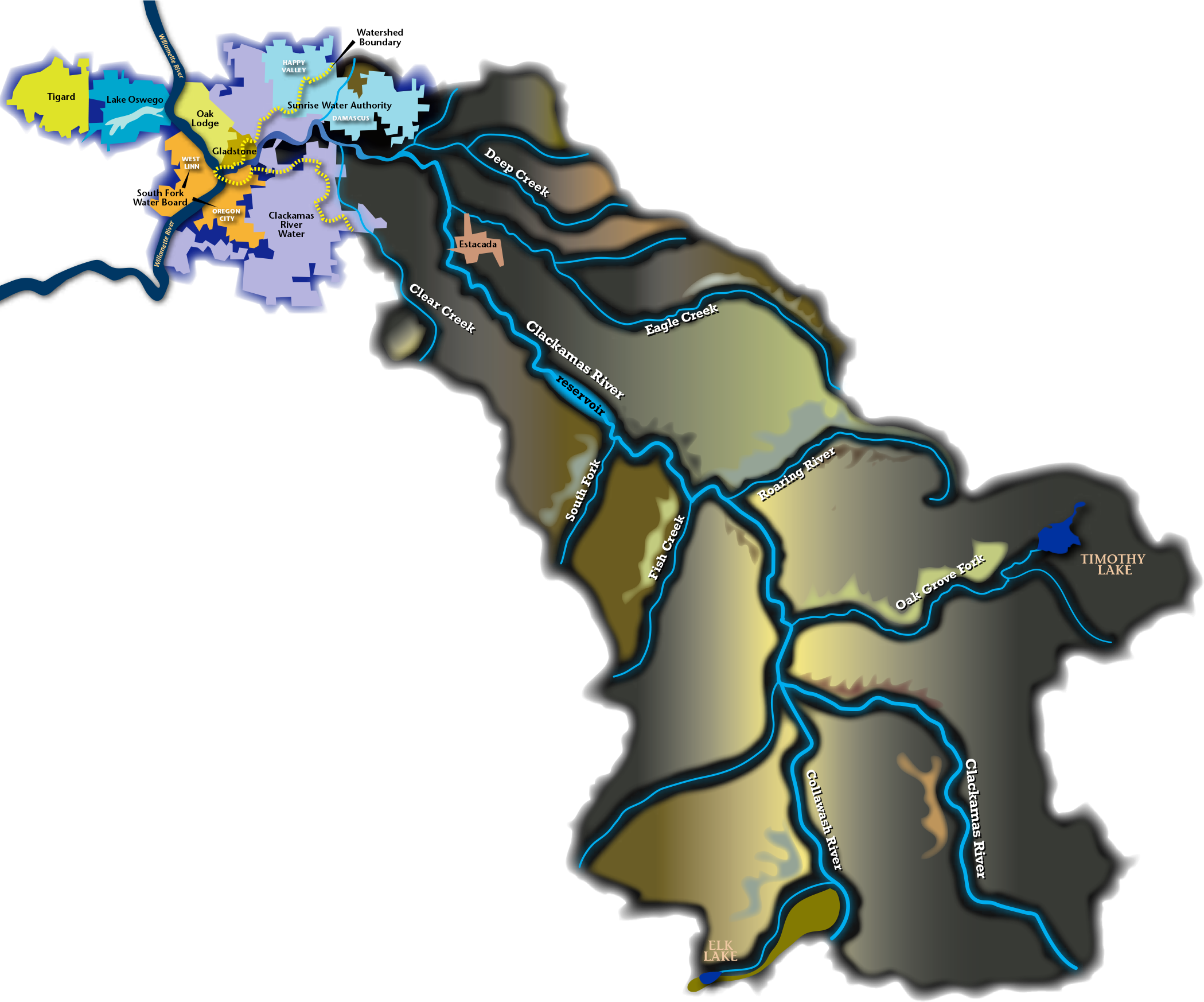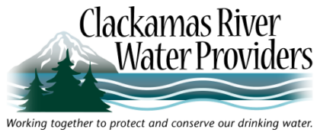Watershed Protection
Source Water Protection
Source water is the foundation of any drinking water utility and is one of the primary ways to reduce the risk to a source from contamination or decline in production. Source water protection not only helps the utility identify its risk, but it is also necessary to educate regulatory agencies, permitting authorities, and the community about the impacts their actions can have on drinking water source water quality or quantity. Source Water Protection is one of the first key steps in a multiple barrier approach to providing clean drinking water which involves several consecutive steps, including: high quality source water, source water protection, optimized water treatment, distribution system maintenance and water quality monitoring.
Source water protection can also:
-
- Reduce the need for additional treatment to meet water quality standards.
- Help the utility be prepared and reduce the impacts and costs of an emergency when they understand the risks to source quality from contamination, or reduced quantity due to climate change.
- Help sustainability when an alternate source of water may not be available or cost-prohibitive.
Our Source
Drinking Water Protection Plan
Watershed Programs
Source to Tap – Protecting Water Quality

Safe drinking water is our top priority and we are here to monitor and protect it from it source to your tap.
Updated Source Water Assessments
The Oregon Department of Environmental Quality (DEQ) and the Oregon Health Authority (OHA) recently updated the source water assessments for the public water systems that get their water supply from the Clackamas River. This report addresses the drinking water source area for the Estacada, Clackamas River Water, North Clackamas County Water Commission, South Fork Water Board, Lake Oswego Municipal Water, City of Tigard, and Sunrise Water Authority as well as their wholesale customers.
This document updates the original Source Water Assessment work completed in 2005 by the state and water providers to identify natural and human-caused risks to your source water. This updated assessment is intended to provide additional information and resources to assist the CRWP in implementing local drinking water protection efforts.
The report can be found here: Clackamas River Public Water Systems USWA
as well as on DEQ’s web page at https://www.deq.state.or.us/wq/dwp/swrpts.asp).
2020 Wildfire Risk Factors for Drinking Water Source Areas (DWSAs) affected by Wildfire(s)
• Map 1 –Land Use/Ownership
• Map 2 –Updated Source Water Assessment Soil Erosion Potential
• Map 3: USFS BAER Soil Burn Severity (if available)
• Map 4: USFS BAER/USGS Probability of Debris Flow (if available)
• Map Notes and Limitations
https://www.deq.state.or.us/wq/dwp/docs/swaadditionalinfo/AddInfo_00279Estacada.pdf
https://www.deq.state.or.us/wq/dwp/docs/swaadditionalinfo/AddInfo_00187.00580.00591Clackamas.pdf
https://www.deq.state.or.us/wq/dwp/docs/swaadditionalinfo/AddInfo_00457LakeOswego.pdf
Protecting Our Watershed
Unlike the City of Portland’s protected Bull Run watershed, the Clackamas is a multi-use watershed with various users and ownership throughout the watershed.
Each time it rains or snows, pollutants wash off the land and flow untreated into nearby surface and groundwater sources. Because all water in a watershed is connected activities in one part of the watershed often affect other areas. A healthy watershed stores and filters water, stabilizes banks, provides shade and habitat for fish and other aquatic life.
Human activities such as construction, timber harvesting, livestock management, fertilizer and pesticide use if not performed responsibly can degrade water quality. In addition, impervious surfaces such as parking lots, roads, and roofs carry pollutants directly to our streams and natural waterways. Therefore, the combination of cars, homes, people, and animals in the watershed make pollution from stormwater a serious threat to our river’s water quality.
Enhancing watershed health requires understanding your watershed and taking appropriate action as needed to eliminate or control polluting activities. While good water quality may be difficult to see, a rich variety of plants and animals, from aquatic insects to cutthroat trout, indicate a healthy watershed and clean water.
We all play a role in preserving our vital drinking water resources. Whether you’re a resident, business owner, employee or farmer, you can make a difference. Protecting and conserving our drinking water plays a key role in making the best overall use of the precious resource we share.
Check out our Drinking Water Protection Plan to see the strategies and programs that we identified to implement over the next decade to preserve the Clackamas River as a high-quality drinking water source and to minimize future drinking water treatment costs.
Key concerns in the Clackamas Basin are:
Naturally spawning anadromous salmonids – the Clackamas River supports spring and fall Chinook salmon, Coho salmon, Cutthroat trout, and summer and winter Steelhead.
Land use – (agricultural, timber harvesting and urban uses) practices such as removing woody debris from stream channels, clearcutting, removing streamside vegetation, withdrawing water for irrigation, and road building can increase sediment loads and water temperatures.
Urban Growth – Increased growth in the watershed can have negative water quality impacts due to increase impervious surfaces and increase stormwater runoff.
Water Quality – Significant portions of the Clackamas River and its tributaries currently do not meet state water quality standards for temperature and bacteria
Water Supply – Water withdrawals for people must be balanced with maintaining sufficient instream flows to support fish.
Protecting the Clackamas River is one of the top priorities of the Clackamas River Water Providers.
As Clackamas County continues to grow, so does the demand for high-quality water. Conserving and protecting the Clackamas River will play a key role in making the best use of this precious resource we share.
What Can You Do?
-
Install a rain garden to allow water from your property to filter into the ground.
-
Practice water efficient landscaping an/or naturescaping.
-
Prevent stormwater runoff by decreasing impervious surfaces.
-
Restore streamside and riparian areas by planting native trees and shrubs.
-
Properly dispose of, or recycle, motor oil, antifreeze, paint, solvents and other toxic materials.
-
Wash your car on the lawn and prevent car wash water from entering storm drains
-
Reduce or eliminate your pesticide and fertilizer use to prevent chemical runoff.
-
Clean up after your pet.
-
Fence livestock away from water areas to protect stream banks, reduce erosion and protect water quality.
-
Inspect and properly maintain septic systems.
-
Conserve water, especially in the summer months when river flows are at their lowest. The more water we save, the more water we can keep in the river for fish.
-
Get involved! Attend a Clackamas River Water Providers, city council, or water board meeting.
-
Call your water provider for more information.
-
Join our local watershed council, the Clackamas River Basin Council.
-
For more ideas on how you can prevent pollution from entering our water ways click here.
Want to learn more about the benefits of watershed protection? Check out the links below.
Watershed Restoration Mean Clean Drinking Water for Oregonians (Opinion)
Protection Our Water Sources Brings a Wealth of Benefits

![]()
Our Source
![]()
Drinking-Water Protection
![]()
Watershed Programs
![]()
Water Quality
![]()
